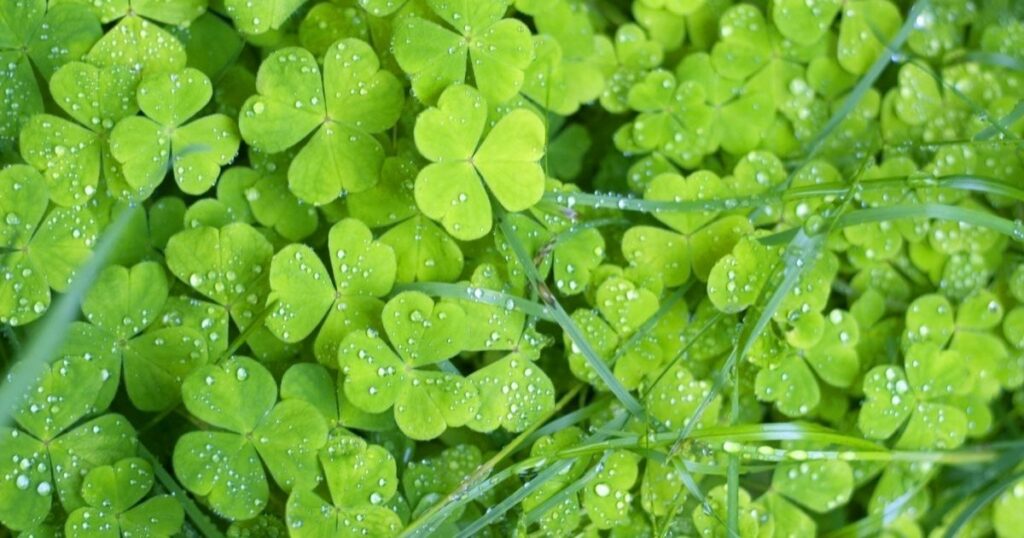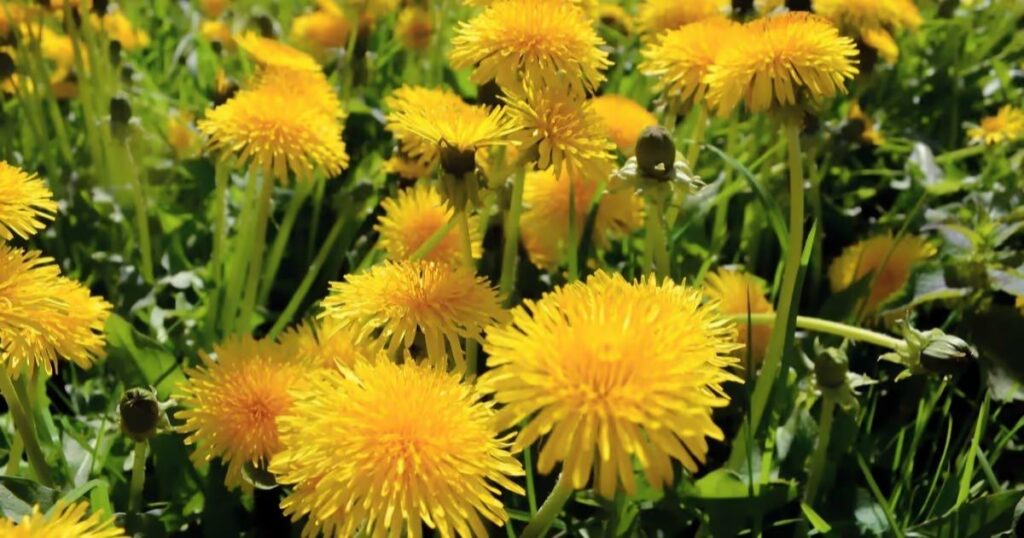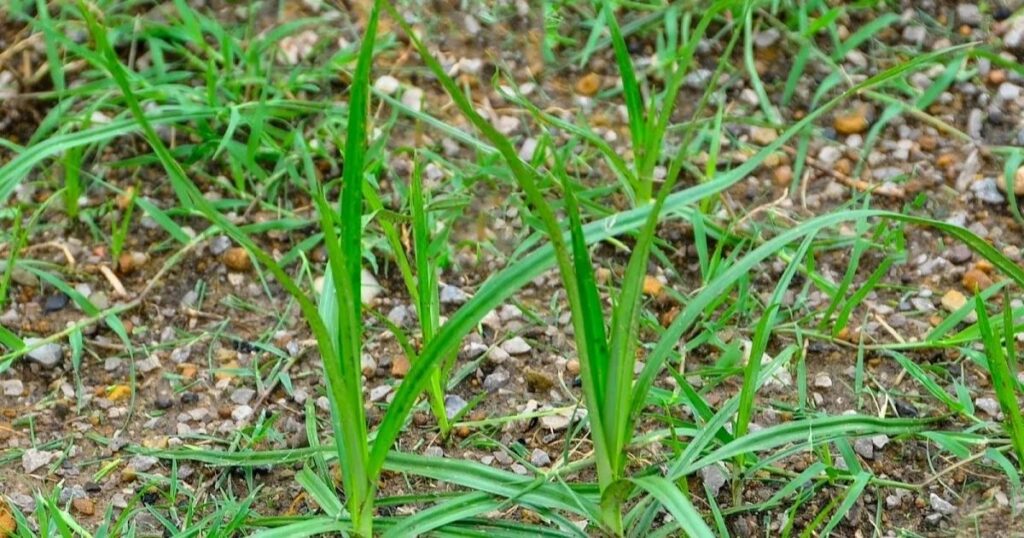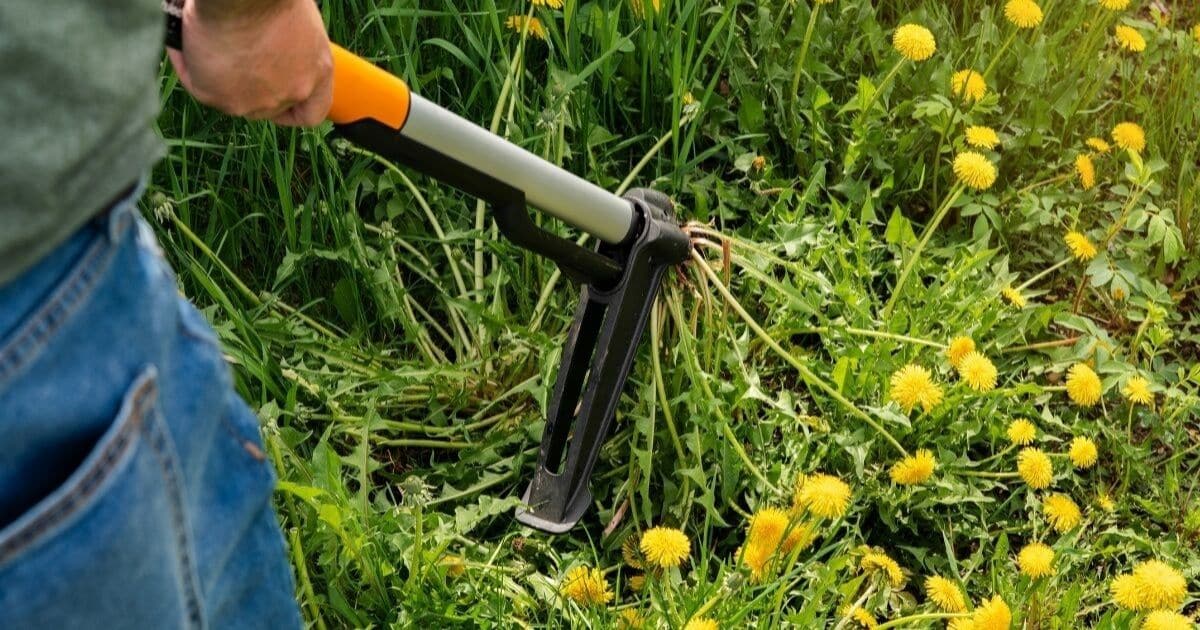A lush, green lawn is the pride of many homeowners, but pesky weeds can quickly turn that dream into a nightmare. While some weeds are merely unsightly, others are aggressive invaders that can choke out your grass and take over your yard. In this comprehensive guide, we’ll explore the top five lawn weeds you can do without, and provide effective strategies to keep your lawn weed-free and beautiful.
BITTERCRESS
Bittercress, an annual broadleaf weed, may seem harmless at first glance, but don’t be fooled by its unassuming appearance. This persistent lawn invader can quickly become a major headache for homeowners who value a pristine lawn.
What is Bittercress?
Bittercress (Cardamine hirsuta) is a winter annual weed that thrives in cool, moist conditions. It’s particularly common in moderate climates, where it can germinate year-round. This adaptability makes Bittercress a formidable opponent in the battle for lawn supremacy.
Identifying Bittercress
To effectively combat bittercress, you need to know what you’re looking for:
- Initial appearance: Small, flat, green rosettes
- Mature form: Large mats of rounded leaflets
- Flowers: Thin stalks with small, white flowers
- Seed pods: Numerous, needlelike structures
The Bittercress Life Cycle
Understanding the life cycle of bittercress is crucial for effective control:
- Germination: Occurs in cool, moist conditions
- Growth: Rapidly spreads to form large mats
- Flowering: Produces small, white flowers
- Seed dispersal: Ripe pods burst, scattering seeds up to several feet away
Why Bittercress is Problematic
Bittercress may only live for a single year, but its impact can last much longer:
Also read this post:The essential steps of planting tall fescue grass seed
- Prolific seed production ensures future infestations
- Rapid growth outcompetes desirable grass
- Year-round germination makes control challenging
- Seeds can remain viable in the soil for extended periods
Controlling Bittercress
To keep bittercress at bay, consider these strategies:
- Hand-pulling: Effective for small infestations, but ensure you remove the entire root system
- Proper lawn maintenance: Regular mowing and appropriate watering can discourage bittercress growth
- Pre-emergent herbicides: Apply in early fall to prevent germination
- Post-emergent herbicides: Use selective broadleaf herbicides for established plants
By understanding and addressing bittercress early, you can prevent it from becoming a persistent problem in your lawn.
CLOVER

Clover, with its distinctive three-leaf pattern, is a common sight in many lawns. While some view it as a charming addition to their grass, others see it as an unwelcome invader that disrupts the uniform appearance of their turf.
Types of Clover in Lawns
Two main types of clover are commonly found in lawns:
- White clover (Trifolium repens)
- Red clover (Trifolium pratense)
Both species are perennial broadleaf weeds that can spread quickly and outcompete grass in certain conditions.
Why Clover Thrives in Lawns
Clover has several characteristics that make it a successful lawn invader:
- Nitrogen fixation: Clover can thrive in low-nutrient soils
- Drought tolerance: It requires less water than many grass species
- Low growth habit: Clover can avoid mower blades, allowing it to spread
- Rapid reproduction: Both by seed and through creeping stems
The Pros and Cons of Clover in Lawns
While clover is often considered a weed, it does have some benefits:
Pros:
- Nitrogen fixation improves soil fertility
- Attracts pollinators like bees
- Stays green during drought conditions
- Can fill in bare patches in lawns
Cons:
- Disrupts uniform lawn appearance
- Can outcompete grass in favorable conditions
- May attract bees, which can be a concern for those with allergies
- Difficult to control once established
Controlling Clover in Your Lawn
If you decide that clover is a weed you’d rather do without, consider these control methods:
- Improve soil fertility: Well-fed lawns are more resistant to clover invasion
- Raise mowing height: Taller grass can outcompete clover
- Use corn gluten meal: A natural pre-emergent herbicide
- Apply selective herbicides: Choose products specifically designed for clover control
Remember, consistent lawn care practices are key to preventing and controlling clover infestations.
CRABGRASS
Crabgrass is perhaps one of the most notorious lawn weeds, known for its ability to quickly take over large areas of turf. This annual warm-season grass weed can be a significant challenge for homeowners seeking a pristine lawn.
Understanding Crabgrass
Crabgrass (Digitaria spp.) is an annual weed grass that completes its life cycle in a single year. However, its impact can last much longer due to its prolific seed production.
The Crabgrass Life Cycle
- Germination: Begins in spring when soil temperatures reach about 55°F (13°C)
- Growth: Rapid spread throughout the summer
- Seed production: A single plant can produce up to 150,000 seeds
- Die-off: Plants die with the first frost, but seeds remain dormant in the soil
Why Crabgrass is Problematic
Crabgrass poses several challenges for lawn enthusiasts:
- Rapid spread: Can quickly overtake large areas of lawn
- Unsightly appearance: Coarse texture and color differ from most turf grasses
- Competitive nature: Outcompetes desirable grasses for water and nutrients
- Difficult to control: Low growth habit allows it to avoid mower blades
Identifying Crabgrass in Your Lawn
Look for these characteristics to spot crabgrass:
- Coarse, wide leaf blades
- Stems that grow close to the ground in a star-like pattern
- Light green to yellowish-green color
- Seed heads that resemble a crab’s legs (hence the name)
Effective Crabgrass Control Strategies
To keep crabgrass at bay, consider these approaches:
Pre-emergent herbicides: Apply in early spring before germination
Post-emergent herbicides: Use when crabgrass is young and actively growing
Cultural controls:
- Maintain proper mowing height (usually 2.5-3 inches)
- Water deeply but infrequently to encourage deep root growth in desirable grasses
- Overseed in fall to create a dense turf that resists crabgrass invasion
Manual removal: Hand-pull small infestations, ensuring you remove the entire root system
Combining these strategies and maintaining a healthy lawn can significantly reduce crabgrass problems over time.
DANDELION

The dandelion, with its bright yellow flowers and distinctive puffball seed heads, is perhaps the most recognizable lawn weed. While some appreciate its cheerful appearance and potential uses, many homeowners view it as a persistent nuisance in their quest for a perfectly manicured lawn.
Understanding Dandelions
Dandelions (Taraxacum officinale) are perennial broadleaf weeds that can thrive in a variety of conditions. Their ability to adapt and reproduce quickly makes them a formidable opponent in lawn care.
The Dandelion Life Cycle
- Germination: Seeds can sprout in various conditions, even in small cracks in pavement
- Rosette formation: Leaves grow in a circular pattern close to the ground
- Flowering: Bright yellow flowers appear on hollow stalks
- Seed dispersal: Flowers turn into white puffballs, with seeds that can travel miles on the wind
- Root development: Long taproots can extend up to 18 inches deep
Why Dandelions are Problematic in Lawns
Dandelions pose several challenges for lawn enthusiasts:
- Rapid spread: A single plant can produce thousands of seeds
- Deep taproots: Make complete removal difficult
- Adaptability: Can thrive in various soil and light conditions
- Competitive nature: Outcompetes grass for water and nutrients
Identifying Dandelions
Look for these characteristics to spot dandelions in your lawn:
- Rosette of jagged, tooth-edged leaves
- Hollow, leafless flower stalks
- Bright yellow flowers that turn into white puffballs
- Milky sap when stems or leaves are broken
Effective Dandelion Control Methods
To manage dandelions in your lawn, consider these strategies:
Manual removal: Use a dandelion fork to remove the entire taproot
Mowing: Regular mowing can prevent seed production
Herbicides: Both selective and non-selective herbicides can be effective
Cultural controls:
- Maintain a thick, healthy lawn to prevent dandelion establishment
- Improve soil fertility to favor grass growth over dandelions
- Overseed bare spots to prevent dandelion colonization
Natural alternatives:
- Pour boiling water directly on the plant’s crown
- Apply a mixture of vinegar and dish soap to the leaves (be cautious, as this can also harm grass)
Remember, consistent lawn care and early intervention are key to preventing dandelion infestations.
NUTSEDGE

Nutsedge, often mistaken for a type of grass, is a sedge that can quickly become a lawn owner’s nightmare. Its ability to spread rapidly and resist many common weed control methods makes it one of the most challenging lawn weeds to manage.
Understanding Nutsedge
Nutsedge, also known as nutgrass, comes in two main varieties:
- Yellow nutsedge (Cyperus esculentus)
- Purple nutsedge (Cyperus rotundus)
Both types are perennial weeds that can spread aggressively through seeds, rhizomes, and underground tubers called nutlets.
Identifying Nutsedge in Your Lawn
To effectively control nutsedge, you need to be able to identify it:
- Triangular stems: Unlike grass, which has round stems
- Leaves: Arranged in sets of three, with a prominent midrib
- Color: Yellow-green, often lighter than the surrounding grass
- Growth habit: Grows faster than most turf grasses
- Flower/seed heads: Spiky, yellow-brown structures at the top of the plant
Why Nutsedge is Problematic
Nutsedge poses several challenges for lawn care:
- Rapid spread: A single plant can form thousands of nutlets in a season
- Persistence: Nutlets can remain viable in the soil for up to 10 years
- Resistance: Many common herbicides are ineffective against nutsedge
- Competitive nature: Outcompetes grass for water and nutrients
- Unsightly appearance: Stands out due to different colors and textures from turf grass
The Nutsedge Life Cycle
Understanding the nutsedge life cycle is crucial for effective control:
- Sprouting: Nutlets or seeds germinate in late spring or early summer
- Growth: Plants overgrow, producing leaves and developing root systems
- Tuber production: New nutlets begin forming underground
- Flowering: Spiky seed heads appear (though seed production is less significant than tuber production)
- Dormancy: Above-ground growth dies back in the fall, but tubers remain viable in soil
Effective Nutsedge Control Strategies
Controlling nutsedge requires a multi-faceted approach:
Manual removal: Hand-pull young plants, ensuring you remove all tubers
Cultural controls:
- Improve drainage in your lawn, as nutsedge thrives in moist conditions
- Maintain proper mowing height to shade out nutsedge seedlings
- Avoid overwatering, which can create favorable conditions for nutsedge
Herbicides:
- Use herbicides specifically designed for nutsedge control
- Apply when plants are young and actively growing
- Multiple applications may be necessary
Solarization: Cover infested areas with clear plastic during hot summer months to kill nutlets
Prevention:
- Inspect new soil or sod for signs of nutsedge before introducing it to your lawn
- Clean lawn equipment to prevent spreading nutlets
Remember, nutsedge control is often a long-term process due to the persistence of underground tubers. Consistency and patience are key to successful management.
EFFECTIVE WEED TREATMENT AND CONTROL
While each of the five lawn weeds we’ve discussed presents unique challenges, there are some general principles and strategies that can help you maintain a weed-free lawn. By combining proper lawn care practices with targeted weed control methods, you can create an environment where your desired grass thrives and weeds struggle to establish themselves.
Integrated Weed Management
An integrated approach to weed management combines various methods for the most effective results:
- Cultural controls: Practices that promote a healthy lawn
- Mechanical controls: Physical removal or disruption of weeds
- Chemical controls: Use of herbicides when necessary
- Biological controls: Utilizing natural predators or competitors of weeds
Cultural Control Practices
Proper mowing:
- Maintain the recommended height for your grass type
- Mow regularly to prevent weed seed production
- Keep mower blades sharp for clean cuts
Appropriate watering:
- Water deeply but infrequently to encourage deep-root growth
- Aim for 1 inch of water per week from rain or irrigation
Soil management:
- Test soil every 3-4 years and amend as needed
- Apply lime if necessary to balance soil pH
- Use high-quality fertilizers to meet grass nutrient needs
Overseeding:
- Fill in bare spots to prevent weed colonization
- Choose grass varieties suited to your climate and lawn conditions
Mechanical Weed Control
- Hand-pulling: Effective for small infestations or isolated weeds
- Cultivation: Disrupts weed root systems but can also damage grass
- Mulching: Prevents weed seed germination in garden areas
Chemical Weed Control
When using herbicides, always follow label instructions carefully:
Pre-emergent herbicides:
- Prevent weed seeds from germinating
- Apply before the expected weed emergence
Post-emergent herbicides:
- Kill existing weeds
- Can be selective (targeting specific weeds) or non-selective
Timing is crucial:
- Treat young, actively growing weeds for the best results
- Apply when weeds are less than 3 inches tall
Spot treatments:
- Target individual weeds to minimize the impact on the surrounding grass
Biological Weed Control
While less common in home lawns, biological control methods can be effective:
- Introducing competitive plants that outcompete weeds
- Using insects or pathogens that target specific weed species
Long-term Weed Prevention
- Maintain a thick, healthy lawn that naturally resists weed invasion
- Address underlying issues that may be favoring weeds over grass
- Be vigilant and address new weeds promptly before they can spread
- Keep lawn equipment clean to prevent spreading weed seeds
Professional Help
For persistent or extensive weed problems, consider consulting a professional lawn care service. They can provide:
- Accurate weed identification
- Customized treatment plans
- Access to professional-grade products and equipment
- Ongoing monitoring and maintenance
By implementing these effective weed treatment and control strategies, you can significantly reduce the presence of bittercress, clover, crabgrass, dandelions, nutsedge, and other unwanted plants in your lawn. Remember, a healthy, well-maintained lawn is your best defense against invasive weeds.
In conclusion, while these five top lawn weeds – bittercress, clover, crabgrass, dandelion, and nutsedge – can be persistent and challenging, they are not invincible. With the right knowledge, tools, and techniques, you can effectively manage these weeds and maintain a beautiful, lush lawn that you can be proud of.
Stay vigilant, act promptly when weeds appear, and focus on promoting overall lawn health. Your efforts will be rewarded with a vibrant, weed-free lawn that enhances the beauty of your home and provides a perfect space for outdoor enjoyment.
FAQs
What is the best thing for lawn weeds?
The best approach for lawn weeds is an integrated weed management strategy. This combines proper lawn care practices, such as regular mowing and appropriate fertilization, with targeted weed control methods like selective herbicides when necessary.
What kills weeds permanently naturally but not grass?
While no natural method permanently kills weeds without potentially harming grass, some organic options can be effective when used consistently. Corn gluten meal can prevent weed seeds from germinating, while vinegar or boiling water can kill existing weeds, though these methods require careful application to avoid damaging grass.
What’s best for weeds?
The best method for controlling weeds depends on the specific type of weed and the extent of the infestation. A combination of cultural practices to promote a healthy lawn and targeted use of appropriate herbicides is most effective for most situations.
Which herbicide works best if weeds are present?
For existing weeds, a post-emergent selective herbicide that targets broadleaf weeds while leaving grass unharmed is often the most effective choice. Products containing 2,4-D, dicamba, or mecoprop (MCPP) are commonly used and effective against many lawn weeds.











